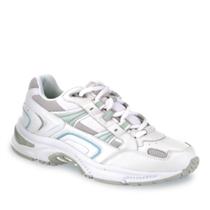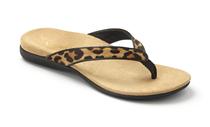Ankle Pain and Foot Numbness – Tarsal Tunnel Syndrome
A common cause of chronic foot and ankle pain is a condition called “tarsal tunnel syndrome”.
What Causes Tarsal Tunnel Syndrome?
You have probably heard of carpal tunnel syndrome – which is an entrapment of a nerve in your wrist that causes numbness, tingling and pain in the hand. Tarsal tunnel syndrome is a similar condition but affects the foot. It is caused by irritation of the tarsal nerve that travels on the inside of the ankle, behind the ankle bone. Most often the irritation is caused by excessive stretch on the nerve and is often associated with flat feet. Other causes of irritation of the nerve include a mass (such as a cyst) that puts pressure on the nerve, trauma to the nerve and swelling of the ankle that increases pressure on the nerve.
What Does Tarsal Tunnel Syndrome Feel Like?
Tarsal tunnel syndrome can cause many types of foot pain including burning pain, shooting pain, sharp pain, tingling numbness and aching. It can cause heel pain, ankle pain, bottom of the foot pain and even toe pain. .
Treatment – Non-Surgical
We feel strongly that the initial treatment of tarsal tunnel syndrome should be conservative. Surgery should only be a last resort.
Custom orthotics are often our first line of treatment but to be effective in relieving symptoms of tarsal tunnel syndrome a very specific orthotic prescription should be used. Several research studies over the past 15 years have indicated exactly how an orthotic should be prescribed to best alleviate tension and compression on the tarsal nerve.
How Should Orthotics Be Made to Treat Tarsal Tunnel Syndrome?
There are several studies (listed below) that indicate exactly how orthotics should be made to treat tarsal tunnel syndrome. The studies show that to decrease tension on the tibial nerve the orthotics should act to do three things:
- Raise the heel. In order to do this we incorporate lifts under the heel of the orthotic. The thickness of the lift depends on the findings from our examination
- Stop the heel from rolling in.To stop the heel from rolling in we will make the orthotic deeper around the heel and incorporate some wedging built-in to the orthotic in order to provide force that decreases the eversion (rolling-in) of the heel.
- Stop the arch of the foot from collapsing. To do this we prescribe a total contact orthotic. This is the only type that will stop arch collapse sufficiently to limit tension on the tibial nerve.
It is important to note that the studies we are referencing show how orthotics should be made in order to reduce tension on the tarsal nerve and to reduce pressure in the tarsal canal. There are not studies that we are aware of that specifically show how well orthotics work to treat tarsal tunnel syndrome.
Our experience is that tarsal tunnel syndrome does not respond as well to orthotic therapy as other causes of heel and foot pain such as plantar fasciitis. A rough estimate is that about 50% of patients with tarsal tunnel syndrome will see improvement with orthotic devices if the orthotics are made correctly. The advantage of orthotic therapy, however, is that it is completely safe and does help many patients.
Other treatments for tarsal tunnel syndrome include anti-inflammatory measures, injection, shoe changes and, if all conservative treatment fails, surgical decompression of the tarsal nerve.
Treatment – Surgical
Video: Tarsal Tunnel Syndrome Anatomy, Cause and Surgery
If all conservative treatment fails, then surgery may be beneficial. The goal of surgery is to reduce tension and pressure on the tarsal nerve. The video above provides good information on diagnosis and surgery of tarsal tunnel syndrome.
Diagnosis of Tarsal Tunnel Syndrome
Diagnosis is initially through history and examination. There are some easy and painless tests that will help us determine if tarsal tunnel syndrome is the likely cause of your pain. For more specific evaluation of the actual cause of tarsal tunnel syndrome we may also use the following tests:
- Nerve conduction study: For this test you are sent to a neurologist who specializes in nerve testing. They will attach electrodes to your legs and feet and do testing that determines if there is a nerve entrapment or other nerve injury that is causing your symptoms.
- MRI: We will sometimes get an MRI to evaluate if there is something within the tarsal canal that is putting pressure on the tarsal nerve and causing your tarsal tunnel syndrome symptoms. For example, in the past we have found cysts, bone from a previous ankle trauma or enlarged veins that put pressure on the nerve and cause tarsal tunnel symptoms.
Home Treatments for Tarsal Tunnel Syndrome
This is a problem that should be treated professionally rather than at home. If left untreated it only tends to get worse. If, however, you want to try some home treatments the goal is to try to reduce tension on the tarsal nerve by supporting the arch as much as possible and stopping the heel from rolling in. So, if you want to try self treating tarsal tunnel syndrom e, try the following three treatments for three weeks. If you are not better by then, see a podiatrist.
e, try the following three treatments for three weeks. If you are not better by then, see a podiatrist.
The products that are recommended below are those that we recommend to our patients (and our families) and they are also affiliate links so we may receive a small commission at no additional cost to you if your order from the link.
1. Wear a stable shoe that prevents the heel from rolling in. A good example are the Vionic walking shoes. You can see the men’s Vionic Walking Shoe here and the women’s Vionic walking shoe here.
2. Wear a very stable arch support in your shoes. The FootChair Podiatrist Designed Orthotic with adjustable arch height is our recommended arch support for tarsal tunnel. This has the best arch height we have found to transfer pressure off your tarsal tunnel as it is the only OTC orthotic to have an adjustable arch.
3. When you are not wearing shoes wear a flip-flop or sandal with extremely good arch support. The best on the market by far are the Vionic sandals found here.
Then wear these all the time for about three weeks. Don’t go barefoot at all. If you are not 100% better at the end of three weeks, see a podiatrist right away.
Diagnosis of Tarsal Tunnel
Diagnosis of tarsal tunnel syndrome is usually made via physical and biomechanical examination. A common test for tarsal tunnel syndrome is called the “Kinoshita” or “Dorsiflexion-Eversion” test.
Advanced diagnostic testing including x-ray, MRI, and nerve conduction studies can help us determine the cause for specific cases of tarsal tunnel syndrome.
Tarsal Tunnel Syndrome in Pregnancy
There seems to be an increase in rates of tarsal tunnel syndrome during pregnancy. This may be due to increased weight gain and increased fluid retention causing pressure and tension on the tarsal nerve. It may also be hormonal. While there are not many studies on tarsal tunnel in pregnancy there is a significant increase in carpel tunnel syndrome during pregnancy.
If you think you might have tarsal tunnel syndrome, make an appointment to see us as soon as possible in our Seattle office. This problem will usually get worse over time, so get treated early.
- Trepman E: Effect of Foot and Ankle Pronation on Tarsal Tunnel Compartment Pressure. Foot Ankle Int. 2000
- Labib, SA, Gould JS: Heel Pain Triad. Foot Ankle Int. 2002
- Kinoshita M, et. al.: A New Test for Tarsal Tunnel Syndrome: J Bone Joint Surg Am 2002





